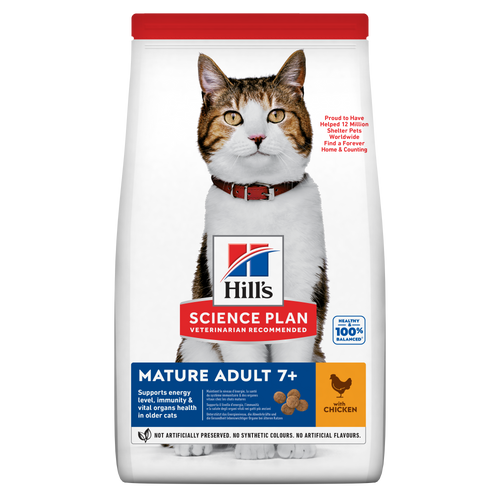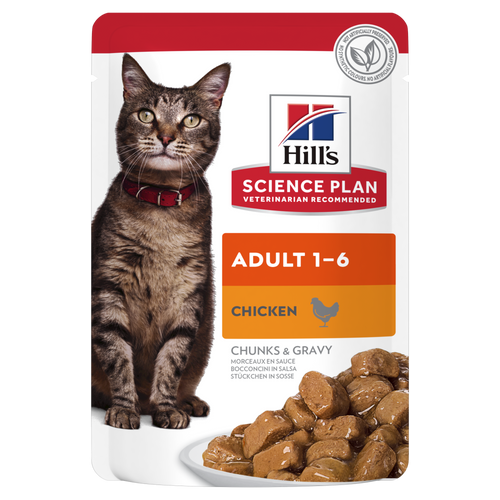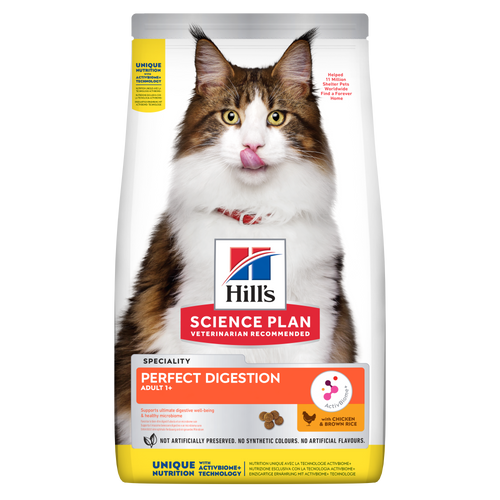Switching cat foods can be challenging but it doesn’t have to be. Cats should gradually transition to a new cat food. Follow these tips to help ensure success.
- Begin the transition by mixing both the current food with her new cat food together. Gradually decrease the amount of the current cat food while increasing the amount of new cat food. Continue to do this over a 7-day period. Transitioning slowly can result in fewer digestive issues and better acceptance of the new cat food.
- Remember to be patient. For finicky, older, or cats with health conditions, the transition time could take 10 days or slightly longer.
- Note: In some cases, such as acute gastrointestinal issues, your veterinarian may not recommend a transition and want you to immediately start feeding the new cat food.
To help you with the switch and cat food transition, refer to the 7-Day Transition Schedule below or watch this video.

Special times to transition your cat’s food
- Kittens should switch to an adult cat food at 12 months of age to ensure they are receiving proper nutrient levels for adult cats.
- For cats who are 7 years or older, they too should change to a mature adult or senior cat food that ensures that they are receiving the appropriate level of nutrients for that older lifestage.
- Pregnant or nursing cats need energy-dense foods with increased calcium content. Be sure to transition them during this special time to a kitten food.
New cat food feeding tips:
- Provide privacy and a quiet eating area away from loud noises and other cats.
- Hand-feed your cat, at least initially. The person offering the cat food should have a good relationship with the cat.
- Offer moist or canned cat food along with dry cat food.
- Ensure you store all of your cat foods appropriately to maintain the quality and freshness of the cat food.
- If moist or canned cat food has been refrigerated, warm to body temperature before feeding. Stir thoroughly to distribute “hot spots” that occur during microwave warming. If it’s too warm to touch, it’s too warm to feed.
- For canned cat food, offer it on a flat dish or saucer so your cat’s whiskers don’t brush against the side of the dish. It may help to initially place a small amount of warm moist cat food near the edge of the dish so your cat can lick it easily.
- If your veterinarian has recommended a special therapeutic cat food for a specific health condition, please be sure to discuss transitioning her cat food in detail. There could be some special considerations and she may have additional suggestions to help you and your cat.
- Therapeutic cat foods have unique qualities and feeding requirements. If you prefer to feed a specific form of cat food (moist/canned, dry or both), let your veterinarian know so they can recommend a food that complements and addresses your cat’s condition. Adding cat foods from the grocery or pet food store will greatly decrease the benefit of the therapeutic cat food and may compromise your cat’s health.
Be sure to follow your veterinarian’s directions and ask questions. They are there to help you and your cat be happy and healthy.



























